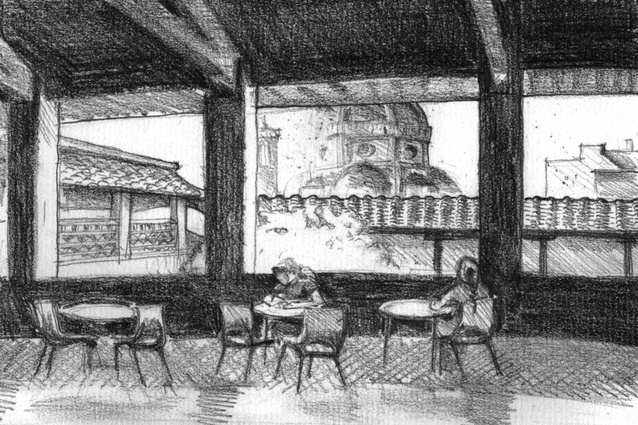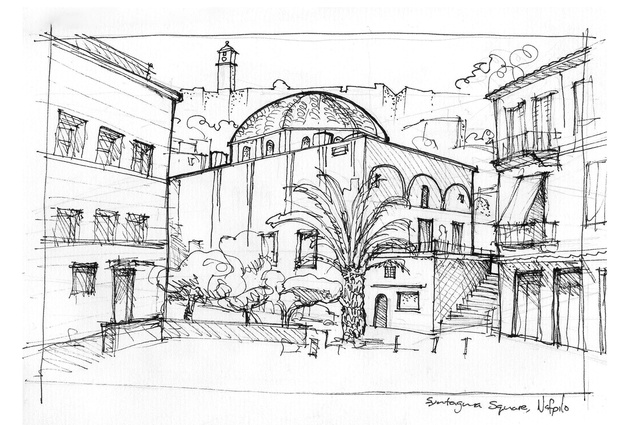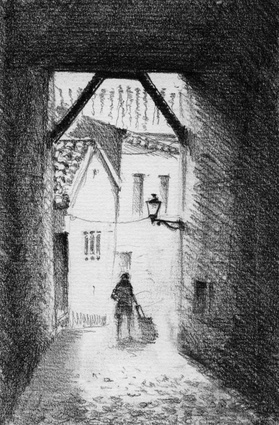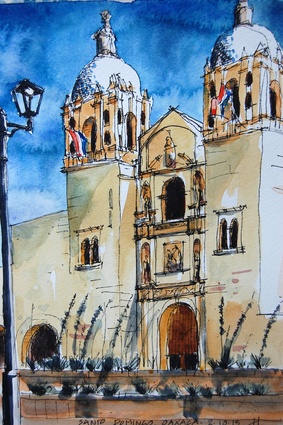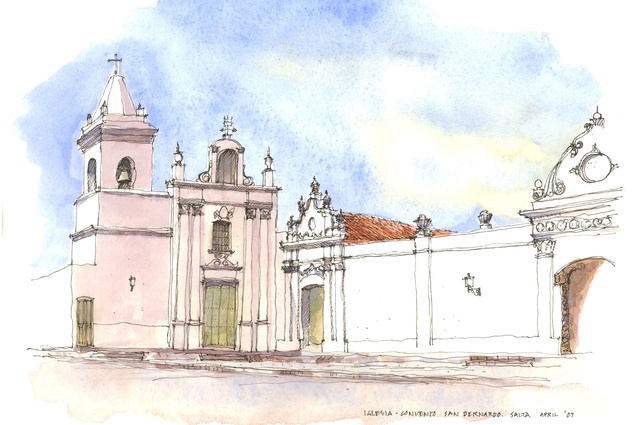Summer series #6: Grand Tour drawings
Throughout history, architects have sketched and painted their way around the globe to try and understand other architects’ buildings.
Here, in the sixth and final installation of our Grand Tour summer series, we showcase the sketches of New Zealand architectural graduate Arnika Blount from Jasmax and architect Harry Street from Creative Spaces.
ARNIKA BLOUNT
Where was this drawing made?
In Toledo, Spain.
What materials do you use?
I was given a sketchbook before I left to study overseas and the book returned home battered and bulging with sketches, writing and recipes collected along the way, as well as the dried flowers and vegetation Bioscurity New Zealand let me keep.
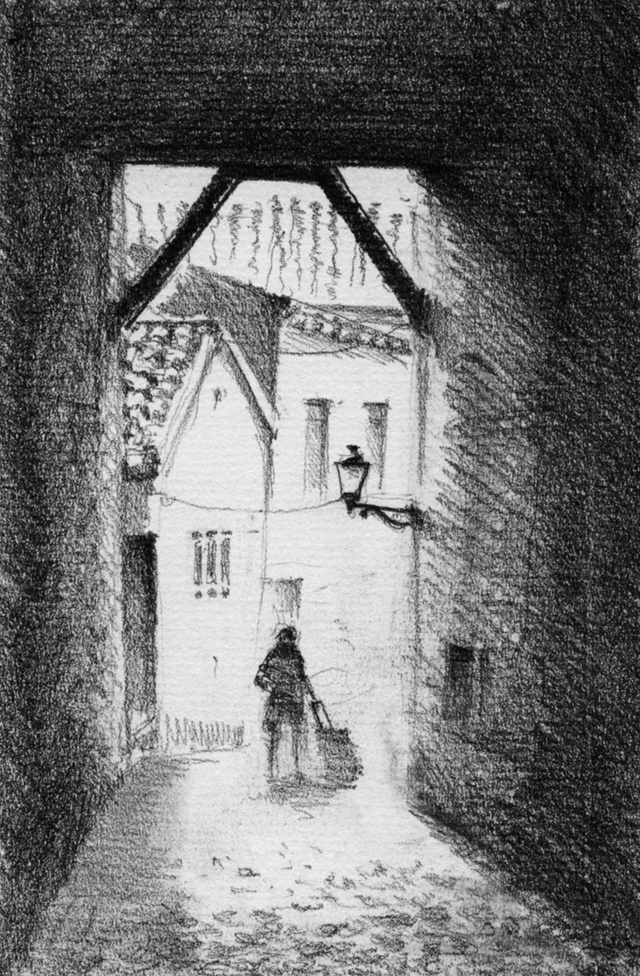
Why do you enjoy drawing while travelling?
Keeping a visual diary has become a rewarding discipline for me. I draw what catches my eye, which can inadvertently generate a series that follows a line of interest. Some sketches indicate an early obsession with ancient thresholds (partially obscured views through gateways in Toledo and San Gimignano). Others record places of personal significance or reference a travel anecdote.
I have found that applying the written word and the sketched line, indiscriminately and in tandem, best captures the essence of experiences for me. My sketchbooks are a resource that acts as an aide-memoire, I return to them from time to time to search for names, ideas, details of a spatial sequence that I encountered or an unusual way of arranging tiles.
For other sketches by Arnika Blount, see the slideshow above.
HARRY STREET
Where and when were these paintings made?
The first is the Church of Santo Domingo, Oaxaca, Mexico, drawn in 2015, and the second is the Church/Convent San Bernardo, Salta, Argentina, made in 2007.
Why did you choose this site?
Oaxaca and Salta are both old cities with many interesting examples of Spanish Colonial architecture and many sites to draw. I tend to draw a scene because I am interested in the drama of light and shade or maybe it’s just the architecture – the placement of windows and doors, decorative elements – although I have to constantly remind myself to stop looking through the eyes of an architect and try to look through the eyes of an artist! If I do the results are normally more interesting.
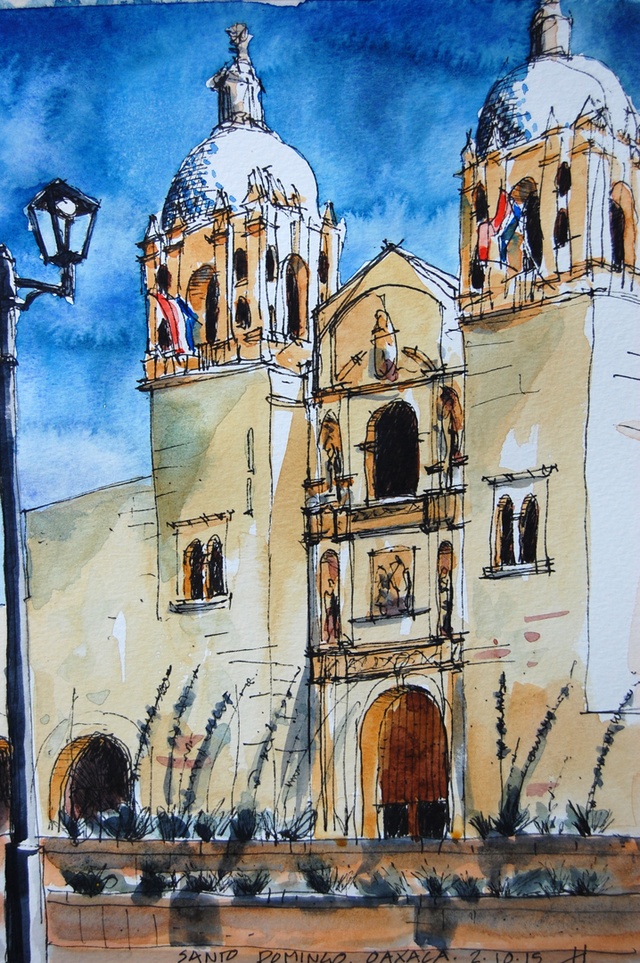
How long do your paintings normally take to produce?
Typically between 10 and 30 minutes, dependent on interruptions or distractions. Another 15 minutes to add the watercolour later (hotel or at home).
Is this your typical medium? What kind of paper do you use?
I started with pencil but now it is mostly waterproof pen and watercolour. Sketches are normally on A4 200 to 300gsm watercolour paper (smooth or rough depending on what I can get at the time).
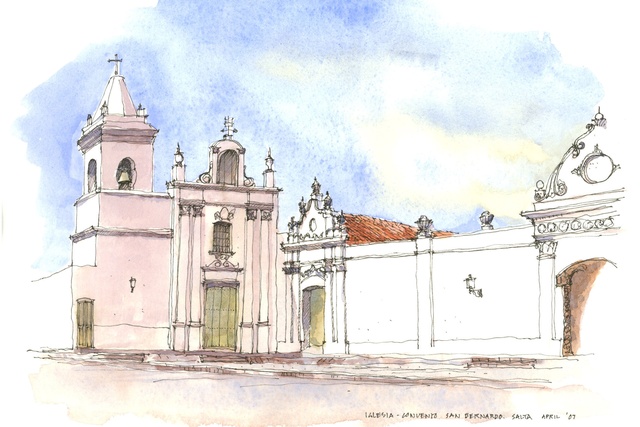
Why do you enjoy drawing while travelling? What have you learnt though your investigations over time?
Drawing provides a better opportunity to understand what you are looking at than taking a photograph – it provides much stronger memories, I presume because of the stronger emotional connection.
I have very strong recollections of each sketch; where and when it was done, how I had set up – walking into a dilapidated office and asking to borrow a chair to be comfortable, being interrupted by someone who wanted to show (and sell) me his sketches or talking with an old man (in a language I am not competent in) who had decided to sit alongside and watch, or the six year old who was adamant I had to add a particular detail. It is a very satisfying way of capturing a sense of place and engaging with people who live there – and it is therapeutic.
Any interesting feedback from passers-by?
People always approach you – they want to know if you are an artist, where are you from and if they can recommend accommodation or a place to eat! Sadly, no one has ever offered to purchase a sketch!

